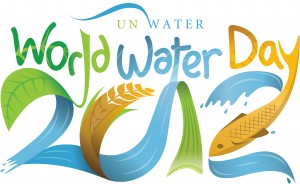22 Mar Access to clean drinking water is a gift.
We are so blessed to have access to clean drinking water – and plenty of it – here at home. That’s not the case for many around the world. Here are some fast facts on Water around the world:
#1 – Around 1.2 billion people, or almost one-fifth of the world’s population, live in areas of physical water scarcity, and 500 million people are approaching this situation.
#2 – Agriculture is the number-one user of water worldwide, accounting for about 70 percent of all freshwater withdrawn from lakes, rivers and aquifers.
#3 – The daily drinking water requirement per person is 2-4 litres, but it takes 2 000 to 5 000 litres of water to produce one person’s daily food.
#4 – It takes 1 000-3 000 litres of water to produce just one kilo of rice and 13 000 to 15 000 litres to produce one kilo of grain-fed beef.
#5 – Since 1950, the area of the earth under irrigation has doubled and water withdrawal for agricultural, domestic and industrial purposes has tripled.
#6 – 1.1 billion people worldwide lack access to adequate clean water and 2.6 billion do not have proper sanitation.
Some of those facts are staggering. International World Water Day is held annually on March 22 as a means of focusing attention on the importance of freshwater and advocating for the sustainable management of freshwater resources. The United Nations General Assembly designated March 22, 1993 as the first World Water Day.
All human activities use water: drinking, cooking, washing, but also and mostly, for producing food, paper, clothes, etc. The water footprint is a way of measuring our direct and indirect water use. The water footprint is the total volume of freshwater that is used to produce the goods and services consumed by an individual or a community or produced by a given business.
Global water use has been growing at more than twice the rate of population growth in the last century.
Water scarcity already affects every continent and more than 40 percent of the people on our planet. By 2025, 1.8 billion people will be living in countries or regions with absolute water scarcity, and two-thirds of the world’s population could be living under water stressed conditions.
In order to really understand how serious the problem is we first must take stock of the immense impact water has on our daily lives and our ability to provide for a better future. Lack of access to adequate, safe water limits our ability to produce enough food to eat or earn enough income. It limits our ability to operate industries and provide energy. Without access to water for drinking and proper hygiene it is more difficult to reduce the spread and impact of life-threatening diseases like HIV/AIDS. Every day, 3 800 children die from diseases associated with a lack of safe drinking water and proper sanitation.
Bringing attention and dedicating real resources to these issues raises awareness and gives people the tools to make wiser choices. We are so lucky to live in Brampton, Ontario, Canada and have access to safe drinking water, water for bathing, watering our gardens, cleaning our cars and making our food. Not everyone does.
Georgia Mouka, Volunteer Blogger at Brampton Meals on Wheels
*Sources: United Nations and World Water Day.




Sorry, the comment form is closed at this time.